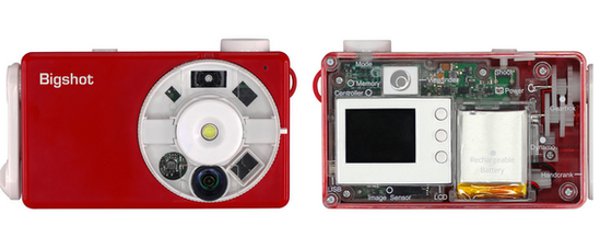
A new DIY digital camera kit has been launched in the US to teach children more about how photography works.
Bigshot’s creator, Prof Shree Nayar, hopes children will learn from first building the camera and then sharing photos.
The parts of the Bigshot camera need to be assembled in a specific sequence to make it work. An accompanying online guide explains the science behind them.

Prof Nayar first came up with the idea for the camera kit in 2006. He then developed the concept at Columbia University, where he heads up its Computer Vision Lab, with the help of funding from Google and the US Department of Defense.
"It’s about getting kids’ hands dirty," Prof Nayar, told the BBC. "In an age when software rules I want kids to know how to build hardware.
"We describe concepts that children would normally encounter at college, but try to make them accessible even to an 8 or 10 year old.
"That’s where a lot of our effort has gone in – to try and make things like image processing, electronics and display technology understandable at some level to younger kids."
The camera features a hand crank to allow users to take pictures even when its battery runs out. It also has a rotatable wheel featuring three different lenses to let owners choose between regular, panoramic and 3D photographs.
Prof Nayar acknowledges that other companies, including Vtech, Fisher Price and Vivitar, offer cheaper child-friendly cameras, some of which beat his $89 product’s 3 megapixel resolution. But he said Bigshot offered something different.
"Unlike a camera that you can snap together and you don’t have to worry about the parts inside, in this case each component that the kid is handling has to be safe and be something that reveals a concept.
"I see it as an experience which includes learning-by-building, then using for photography and finally sharing your pictures with kids from other communities – it’s that entire experience."
A total of 50 of the cameras have already been bought by the Center for Arts Education, a non-profit organisation that offers opportunities to deprived schools in New York.
It plans to give the devices away to a pilot group of underprivileged children in September. If the test proves to be a success, the centre will buy and donate 950 more before the end of the school year in July.
"By putting the Bigshot cameras together and taking artistic photos the children combine arts, science, technology and engineering in ways that really haven’t been possible before," said Jerry James, the centre’s director of teaching and learning.
"In our view it prepares students for college and careers. It’s not just learning about one thing, it’s about learning many things at once," he said.






